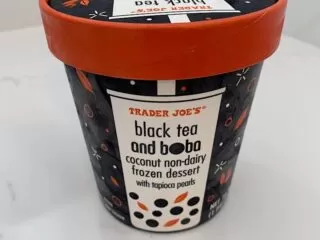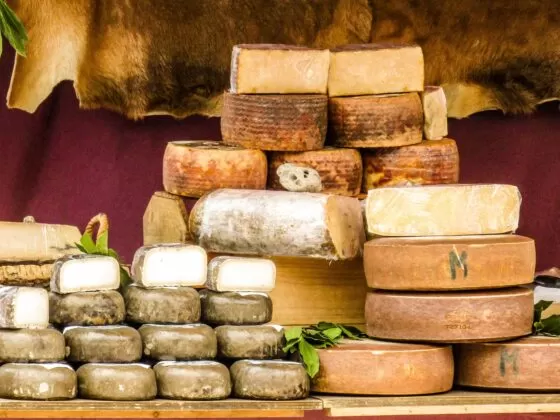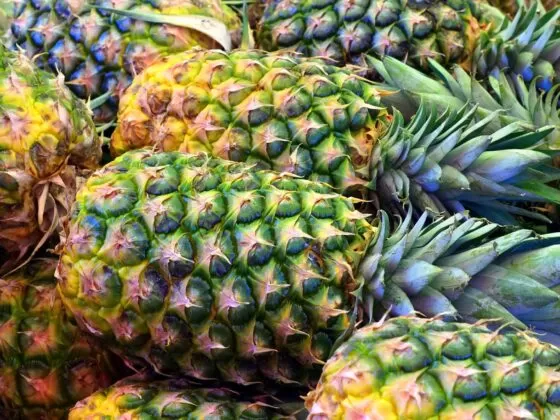When it comes to soda pop, or “soft drinks,” depending on where you are from, there’s really nothing else that compares to the sweet, tangy, fizzy, crackly, foamy taste and experience of root beer.
In some ways, the actual taste of root beer is difficult to describe, as it really is a complex blend of a multitude of flavors. However, at the root of root beer’s iconic taste are elements of the roots of the sassafras tree, which lends curious and earthy hints of vanilla, licorice, wintergreen, lemon, and eucalyptus.
Some people say that root beer is the ultimate soft drink, sweet, refreshing, and delicious as it is, while others are less enthusiastic and liken root beer to drinking cough syrup. The association of root beer to a medicinal beverage is not unwarranted though, as that is exactly how root beer came to exist in the first place.
What Exactly Is Root Beer and Its History?
Root beer had its beginnings as a botanical infusion using the root bark of sassafras (Sassafras albidum), a tree with very distinct lobed leaves, native to the Eastern, Southeastern, and Southwestern regions of the United States.
Early Versions of the Drink
The root infusion (or tea) was used by indigenous peoples and future pharmacists, mainly in the Americas, as a medicinal drink that held the status of a cure-all for whatever ailments one was experiencing. Furthermore, it was believed that the root tea, as it was referred to, was safer to drink than water.
The bark of the sassafras trees, discovered by early explorers and colonists, was quite plentiful in the mid-sixteenth century. And, when explorers like Sir Francis Drake brought the prized bark back to England and continental Europe, it was used especially in England for a quite popular beverage that was a less expensive and tasty alternative to coffee or tea. The drink called Saloop (or Salep), was a steeped, hot beverage doctored up with sugar and milk. Saloop was available along London’s rainy streets on chilly nights and mornings as it was beleived that driving it would soften the drudgery of hangovers. But eventually, the continued exports to Europe depleted the North American bounty of sassafras so much that the plant nearly became extinct.
In the late 19th century, it was Charles Elmer Hires, an inventive American pharmacist, who first developed a consumer-friendly recipe that he called Hires Root Tea. It was sold in packaged-form as a dry root tea, and then later he developed and commercially sold his root tea as an extracted liquid concentrate.
The Beginning of Root Beer As We Know It
In 1876, when the Philadelphia Centennial Exposition took place, Charles Hires changed the name of his product from Hires Root Tea to Hires Root Beer, and it’s thought that the appeal of his drink went up dramatically, especially for working-class Americans many of whom were Pennsylvania coal miners.
Interestingly, Mr. Hires was known as a teetotaler, who was ultimately in support of the trending Temperance Era in the early 1900’s. Later, it would be to his benefit that his non-alcoholic root beer would serve as a nice alternative to the alcoholic beverages that were soon to become obscure and legally prohibited.
Meanwhile in the summer of 1919, people like Roy Allen, who was ultimately the “A” in A & W Root Beer, began his future franchise chain with a root beer stand at a parade in Lodi, California, where returning veterans from World War I could celebrate and enjoy a frosty-mug of ice-cold root beer for 5 cents. By this time, root beer was becoming entrenched in American society as an iconic, refreshing, and highly sought-after treat.
Is Root Beer Healthy for You?
Originally Believed to Have Medicinal Uses
From the earliest uses, the medicinal properties of the leaves and root bark of sassafras, in the form of poultices or root tea, were indeed considered effective against many illnesses and disorders including various infections of the throat, nose, and urinary tract. It was also used to treat syphilis, high blood pressure, skin rashes, rheumatoid arthritis, gout, and swelling of the eyes.
However, by the 1960’s and 70’s, the US Food and Drug Administration came to determine that a volatile oil found in sassafras root bark, known as safrole, was carcinogenic.
Reformulated Ingredients to Keep Its Flavor Profile
In 1976, the FDA banned the use of sassafras in any product, due to the research that linked higher concentrations of safrole to liver cancer in rats.
From that point forward, other ingredients, such as artificial flavorings, vanilla, wintergreen, anise, clove, honey, molasses, and lemon, and any combination thereof, have been used to re-create the unique flavor profile that sassafras brought to the taste of root beer.
Since then, food scientists have been able to distill out the safrole component of the root bark, leaving behind an extract that nears the original root beer taste, but the flavor still falls quite short of the original wow factor according to root beer connoisseurs.
And if you consider the amount of sugar that root beer contains, just as is present in most other soft drinks, well, the question of health kind of goes out the window, and we are left with the fact that what matters is that root beer is just plain yummy. Isn’t that enough?
Does Root Beer Contain Alcohol?
Most often, root beer is not alcoholic, even though it is a fermented drink. Sugar and yeast, are used in the process of making root beer, which impact fermentation and also flavor and mouthfeel (i.e., carbonation).
However, during fermentation, not enough ethanol is created to bring any trace presence of alcohol to a level that warrants attention. It is said that root beer contains about as much alcohol as does a slice of bread, so, yes, your kiddos can safely drink it.
Not Your Fathers Root Beer – the Boozy Kind
There is such a thing known as hard root beer, which while still relatively low on the scale for alcoholic beverages, it does contain alcohol.
Hard root beers are made with a variety of sugar types (as opposed to just cane sugar) that partner better with the yeast, wherein the yeast can more easily feast on the sugars and flourish such that the resulting alcohol by volume, or ABV, is high enough at 4 percent or more to officially create an alcoholic beverage.
In general, root beer is considered to be a soft-drink-for-all-ages, however, there are a few breweries who have made names for themselves crafting specialty hard root beers.
Are Root Beer and Ginger Beer the Same?
While root beer and ginger beer are essentially made in the same fashion, both with their primary flavor ingredient or flavor profile being from roots(or tubers), ginger beer is different because, well, it is made with ginger.
Both beverages are made with water and sugar, and then fermented with yeast. Both are generally non-alcoholic. And both are delicious. It really is a matter of preference as to which one you consume since each have strong yet distinct flavors.
And while both have been used in a variety of culinary delights such as in flavoring confections, ice cream, and even barbeque sauce, ginger beer is more often the mixer of choice in specialty cocktails, such in as the ever-popular Moscow Mule.
But both root beer and ginger beer, even without any alcohol, are refreshing and flavor-packed, and what matters most is which one you feel like enjoying on any given day.
Does Root Beer Have Caffeine In It?
Another question that is often raised, concerns the caffeine content of root beer. And the answer is that, in general, root beer does not contain any caffeine.
However, one brand of root beer, in particular, does contain added caffeine. That brand is Barq’s and for every 12 ounces of root beer they add roughly 22 milligrams of caffeine, which is more than the average amount that a cup of green or black tea contains.
But since the caffeine in root beer is added and not naturally occurring as in the teas, any caffeine present needs to be listed on the ingredient label. Good to know if you plan to have your root-beer-guzzling-toddler settle down for a nap anytime soon!
Is Root Beer Popular In the UK?
While those of us in the United States take much pride in our root beer heritage, and we love our deliciously cold, rich, and foamy root beer on a hot summer’s day, people in the UK aren’t quite as enthusiastic.
For a brief period, sometime in 2014, root beer was banned in the UK, but that was due to the stricter guidelines that exist there anyway with regard to the use of preservatives such as sodium benzoate.
Found in high amounts that by UK standards is considered unhealthy, the UK banned root beers that contained any potassium benzoate.
But that isn’t the only reason for root beer’s comparative lack of popularity in the UK. Much of the lackluster enthusiasm is more so because of what people in the UK consider to be a medicinal, soapy, and cough-syrup-like taste.
For whatever reason, the flavor profile of root beer which is a bold balancing act of sweet vanilla, bitter and citrusy lemon, deep and fragrant licorice, and dark molasses, just has not taken hold in the UK. Though, of course, there are indeed people world-wide, the UK included, who love and crave their root beer.
Conclusion
So, with its long history, the root beer industry is alive and well, and continues to be an ever-trending beverage that is especially appealing to a younger crowd. And no matter the weather or the occasion, an ice-cold mug of root beer just sounds good. Mighty good.







